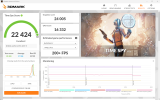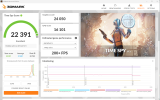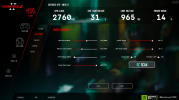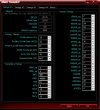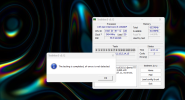Intel Core i5-13600KF @ Stock
GeForce RTX 4070 Ti Phoenix GS @3Ghz
2x 32GB - G.Skill Ripjaws V F4-4000C18Q-128GVK
Memory is manually tuned @ 17-21-21-41 1.45v
Dual Rank, Dual Channel - Gear 1 @ CR1
Hynix MJR IC - VDDQ & VCCSA @ 1.4v
Old ram @ XMP profile: HyperX Fury black HX432C16FB3K2/16
Results (after tuning):

I scored 22 424 in Time Spy
Intel Core i5-13600KF Processor, NVIDIA GeForce RTX 4070 Ti x 1, 65536 MB, 64-bit Windows 11}

I scored 22 391 in Time Spy
Intel Core i5-13600KF Processor, NVIDIA GeForce RTX 4070 Ti x 1, 65536 MB, 64-bit Windows 11}
Gameplay (before):
Gameplay (after):
Looking for feedback to improve on.
